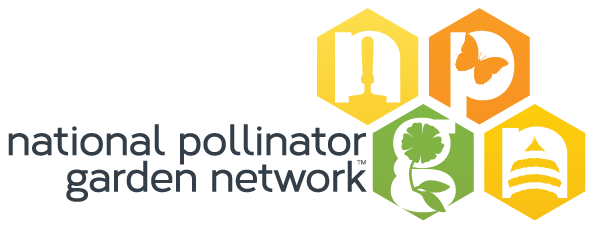Frequently Asked Questions
What is the National Pollinator Garden Network?
The National Pollinator Garden Network is a collaboration of stakeholders from the garden, pollinator and conservation communities working together to support the health of pollinating animals. View our Partners page.
Who funds the efforts of the NPGN?
Each member organization of the NPGN contributes in-kind efforts to support this work.
What is the goal of the Million Pollinator Garden Challenge?
The Million Pollinator Garden Challenge is an initiative of the NPGN that invites participation from organizations and individuals both inside and outside the NPGN. The objective is to increase nectar and pollen providing landscapes of every size in order to address one of the significant threats to pollinator health – the dearth and degradation of forage for pollinators. The goal is to promote and build on the million plus forage locations across the United States.
How long will the challenge run?
The Million Pollinator Garden Challenge reached its million garden goal in 2018. The support of the National Pollinator Garden Network will continue beyond the conclusion of the Challenge and encompass other initiatives that will be determined by the collective body and by circumstances for pollinators.
How is the number of gardens measured?
The gardens will be registered on the MPGC map powered by the SHARE website where visitors will be able to visually track the progress of the campaign. Registrants can upload photos and videos of their sites, and the map can be sorted by garden type. In addition, metrics to identify education, outreach and pollinator garden actions across multiple organizations will be in effect as the campaign progresses.
Are there criteria to qualify as a garden on the SHARE map?
The one criterion common to all gardens on the map is that the plants used in the garden (no matter what the size) provide nectar and pollen sources. We encourage gardens to also provide a water source, be planted in sunny areas with wind breaks, create large “pollinator targets” of native or non-invasive plants, establish continuous bloom throughout the growing season, and eliminate or minimize the impact of pesticides.
May I use the MPGC logo in my promotion of it?
There are downloadable materials that may be used to promote the Million Pollinator Garden Challenge. The logo may not be used for any commercial purpose without written permission from the National Pollinator Garden Network. Specific uses by commercial entities will be evaluated based on the NPGN application for commercial use. Share the badge at the bottom of the Partners page to encourage others to join the challenge.
Are native plantings encouraged by the NPGN?
Blooming native plants are a great choice to support the pollinator habitat of any ecosystem. These can be found at many nurseries. In addition, a list of other common, non-invasive garden plants that will support pollinators is available at many of the NPGN Partners’ sites.
Are all nursery plants good for pollinators?
The best plants for pollinators provide pollen and nectar. Examples of these types of food sources can include flowering annuals and perennials, ground covers, shrubs, and trees.
Can anyone be a part of the Million Pollinator Garden Challenge?
Yes! Anyone who is interested in providing healthy pollinator habitat can do so. Plant and share your garden with others using #polliNATION.
Does the NPGN have a position on neonicotinoids and their effect on pollinators?
There are multiple factors affecting the health of pollinators, including pathogens, pests, climate change, lack of good nutrition, management of land and animals, genetics, and pesticide exposure. Reducing the impact of each of these drivers is critical in promoting pollinator health. Individual partners in the NPGN set their own policy on how to accomplish these measures; the goal of the NPGN is to promote pollinator habitat. To create clean habitat, the effects of exposure to all types of pesticides need to be reduced or eliminated.
How can I teach others about pollinators?
The NPGN has complied a list of resources that you can use to teach others about the importance of pollinators and about ongoing programs designed to help struggling pollinator populations.
Does the MPGC offer a sign I can purchase to display in my habitat?
Thank you for wanting to share your commitment to creating pollinator habitat! The National Pollinator Garden Network is a collaboration of 50 individual organizations, many of which have their own habitat signs, e.g. Monarch Way Stations, Certified Wildlife Habitats®, and variations of many others. To support the collaborative spirit, NPGN choose to not compete with its partners, rather encourage participants to choose one or many of the partner program signs that can be found here. This site also links to Million Pollinator Garden Challenge print on demand promotional materials to help spread the word.
What is the status of the Million Pollinator Garden Challenge in light of the federal administration change?
Pollinators and monarchs are still in decline and need our help, the National Pollinator Garden Network has always been a non-partisan voluntary coalition and the Million Pollinator Garden Challenge will continue with the inclusive engagement from all Americans. It has never been an initiative of any federal administration. The NPGN came together as a public/private response to engage citizens to plant pollinator friendly habitat gardens at a time when the previous administration provided high profile on the pollinator crisis. The NPGN is grateful for the visibility former First Lady Michelle Obama provided in 2015 and applauded the federal action to address the issue and increase pollinator habitat. NPGN is hopeful pollinator friendly efforts will continue through subsequent administrations.

